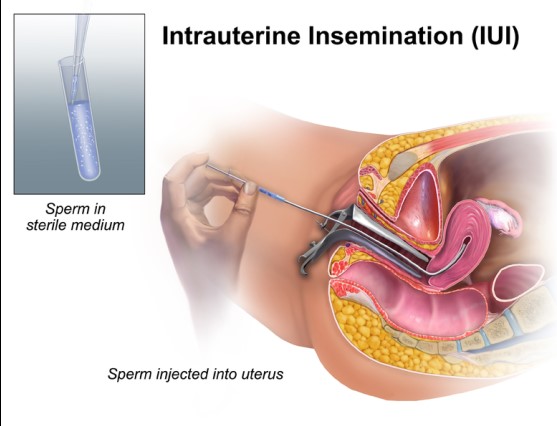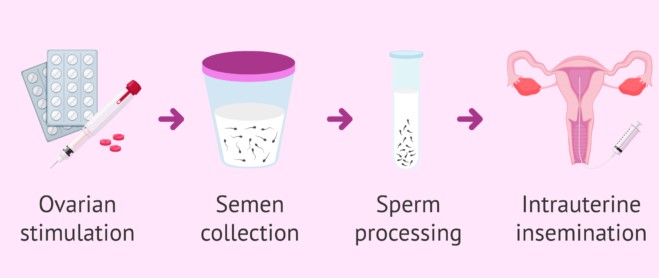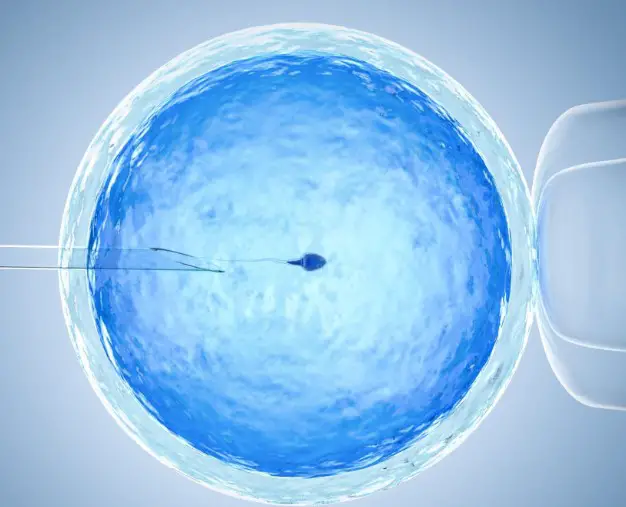The journey towards parenthood for many couples can sometimes require assistance beyond traditional means. In the realm of fertility treatments, Intrauterine Insemination (IUI) and Intracervical Insemination (ICI) emerge as two prominent methods that offer hope and solutions. Both techniques are designed to increase the chances of conception by directly introducing sperm into a woman’s reproductive tract, but they do so in distinctly different ways.
IUI involves the placement of washed and concentrated sperm directly into the uterus, bypassing the cervix and bringing the sperm closer to the egg, potentially increasing the chance of fertilization. In contrast, ICI deposits sperm into the cervix, mimicking natural intercourse more closely. Each method has its own set of benefits, considerations, and ideal use scenarios, tailored to individual circumstances and infertility diagnoses.
The choice between IUI and ICI hinges on various factors including the cause of infertility, the health of both partners, and personal preferences. These fertility treatments are not one-size-fits-all; they are carefully chosen paths on the journey to conception, each with its unique process, costs, and success rates. Understanding the nuances and differences between IUI and ICI is essential for couples making informed decisions about their fertility options.

Fertility Basics
Explanation of Infertility
Infertility is a condition that affects millions of individuals and couples across the globe. It is defined as the inability to conceive after one year of regular, unprotected sexual intercourse. For women over the age of 35, this period is reduced to six months. Infertility can stem from a variety of causes, ranging from hormonal imbalances and structural problems in the reproductive system to lifestyle factors such as stress and obesity.
Overview of Assisted Reproductive Technology (ART)
Assisted Reproductive Technology (ART) encompasses medical procedures used primarily to address infertility. This includes a wide array of treatments, from simple methods like medication to assist ovulation to more complex procedures such as In Vitro Fertilization (IVF). ART is often seen as a beacon of hope for those who face challenges in conceiving naturally, offering various paths to parenthood.
What is IUI?
Definition of Intrauterine Insemination
Intrauterine Insemination (IUI) is an ART procedure designed to enhance the chance of conception. It involves the direct insertion of sperm into a woman’s uterus to facilitate fertilization. The primary goal of IUI is to increase the number of sperm that reach the fallopian tubes, thus improving the possibility of a sperm fertilizing an egg.
Process and Steps Involved
The IUI procedure is relatively straightforward and can be outlined as follows:
- Preparation: Both partners may undergo tests to ensure the most effective timing. Women might be given fertility drugs to stimulate ovulation.
- Sperm Collection and Washing: Sperm is collected from the male partner or a donor and then processed to concentrate the healthiest sperm.
- Insemination: A catheter is used to insert the sperm directly into the uterus. This process is usually quick and involves minimal discomfort.
IUI Benefits
- Success Rates: IUI can significantly increase the chances of pregnancy, especially in couples dealing with certain types of infertility.
- Ideal Candidates: Best suited for those with unexplained infertility, mild endometriosis, or issues with cervical mucus. It’s also an option for couples with mild male factor infertility.
IUI Considerations
- Risks and Side Effects: Includes a small risk of infection and a slight chance of multiple pregnancies due to fertility medication.
- Cost Factors: Less expensive than IVF, but costs can accumulate over multiple cycles.
What is ICI?
Definition of Intracervical Insemination
Intracervical Insemination (ICI), often referred to as the “turkey baster” method, is a simpler form of artificial insemination. Unlike IUI, ICI does not require medical equipment to place the sperm. Instead, sperm is inserted into the cervix using a syringe, mimicking natural ejaculation.
Process and Steps Involved
The ICI procedure is straightforward and can be performed at home or in a clinic:
- Sperm Collection: Similar to IUI, sperm is collected and may be used fresh or thawed if previously frozen.
- Insemination: A syringe (without a needle) is used to deposit sperm into the cervix.
- Timing: As with IUI, timing the insemination with ovulation is critical for success.
ICI Benefits
- Accessibility and Simplicity: Can be performed without medical assistance, making it more accessible and less invasive.
- Ideal Scenarios for Use: Suitable for single women, lesbian couples, or those with no severe male or female fertility issues.
ICI Considerations
- Risks and Effectiveness: Generally considered less effective than IUI, with a lower success rate.
- Cost Comparison with IUI: Typically less expensive than IUI, as it can be done at home and does not require sperm washing or medical equipment.

IUI vs. ICI: Key Differences
Comparison of Techniques
Intrauterine Insemination (IUI) and Intracervical Insemination (ICI) are two distinct fertility treatments, each with its specific procedure and purpose. IUI is a clinical procedure that involves placing washed sperm directly into the uterus, bypassing the cervix and increasing the chances of sperm reaching the fallopian tubes. This method requires medical expertise and equipment. On the other hand, ICI is a more natural approach, akin to traditional intercourse, where sperm is placed into the cervix using a syringe, and can even be performed at home.
Success Rates and Factors Affecting Success
The success rates of IUI and ICI vary significantly, influenced by factors such as the age of the woman, the fertility health of both partners, and the specific fertility issues being addressed. IUI tends to have higher success rates compared to ICI, owing to the direct placement of sperm in the uterus, which increases the likelihood of fertilization. Factors like the timing of the procedure with ovulation and the quality of the sperm also play crucial roles in the success of both methods.
Comparative Costs
When considering the financial aspects, IUI is generally more expensive than ICI due to the involvement of medical personnel, equipment, and the preparation of the sperm. ICI, being less technical and not requiring sperm washing or professional assistance, is a cost-effective option for many. However, the choice between the two should not be based solely on cost but also on effectiveness and suitability for the individual’s or couple’s specific situation.
Choosing Between IUI and ICI
Factors Influencing Choice
Deciding between IUI and ICI involves several considerations. The primary factor is often the underlying cause of infertility. For example, IUI may be recommended for couples dealing with male infertility issues or when the sperm needs to bypass the cervical environment. Lifestyle, convenience, and personal comfort with each procedure also play significant roles. Additionally, financial capabilities can influence the decision, as the costs associated with each method vary.
Role of Medical Advice in Decision-Making
Medical advice is crucial in choosing between IUI and ICI. A fertility specialist can provide valuable insights based on a thorough examination of both partners’ fertility health. They can recommend the most suitable method based on the diagnosis, age, and overall health of the couple. Engaging with a specialist ensures that the chosen method aligns with the couple’s unique circumstances and maximizes the chances of successful conception.
Patient Stories
Real-life Experiences with IUI
“Anna and Michael struggled with infertility for three years before turning to IUI. Despite the challenges, including the emotional toll of multiple cycles, they remained hopeful. Their persistence paid off on the third try when Anna became pregnant. She believes that without the support of their fertility team and the specific timing of the IUI procedure, their dream of becoming parents might not have come true. Their story highlights the importance of resilience and expert guidance in the journey towards parenthood.”
Real-life Experiences with ICI
“Laura and her partner chose ICI for its simplicity and the comfort of being able to perform the procedure in their own home. They appreciated the less clinical approach and the sense of intimacy it preserved. After several attempts, they were overjoyed to welcome their child. Laura’s experience underscores the potential of ICI as a viable option for couples, especially those seeking a more natural and personal fertility treatment experience.”

FAQs
What determines the choice between IUI and ICI?
The choice between IUI and ICI is influenced by several factors including the specific infertility diagnosis, the age of the woman, sperm quality, and any underlying health issues. IUI is often recommended for couples with unexplained infertility, mild male factor infertility, or women with cervical mucus problems. ICI, being less invasive and more akin to natural conception, might be chosen by couples looking for a simpler, more affordable option or when using donor sperm at home.
How do success rates compare between IUI and ICI?
Success rates for both IUI and ICI depend on various factors such as the age of the woman, the fertility issue being treated, and the overall health of the partners. Generally, IUI tends to have higher success rates compared to ICI because it involves placing the sperm closer to the egg. However, individual circumstances can significantly affect the outcome, making it important to consult with a fertility specialist to understand which method offers the best chance of success in your specific situation.
What are the costs associated with IUI and ICI?
The costs of IUI and ICI can vary widely based on location, clinic, and whether additional treatments are needed, such as fertility drugs or donor sperm. Generally, IUI is more expensive than ICI due to the need for sperm washing and the medical procedure involved. However, many find the higher success rates of IUI justify the additional cost. It’s important to consult with a fertility clinic for detailed pricing and to explore any insurance coverage or financing options available.
Conclusion
In the quest for conception, the decision between IUI and ICI is deeply personal and multifaceted. Each method offers a beacon of hope to those navigating the complex journey of infertility, with the choice dependent on a myriad of factors unique to each couple. It’s a decision that embodies not just the technicalities of fertility treatments but the dreams and desires of aspiring parents.
Ultimately, consulting with a fertility specialist is invaluable in making an informed decision between IUI and ICI. These professionals can provide tailored advice based on individual circumstances, guiding couples through the intricacies of each method. As science and medicine continue to advance, the journey towards parenthood through assisted reproductive technology becomes a path filled with greater optimism and potential for success.

